December 16th, 2018 · Comments Off on The Alphonse Allais Reader

Drawn from Black Scat’s eight editions of the master French absurdist, this compendium is a sublime introduction to the wordplay and black humor that shocked and dazzled Bohemian Paris in the raucous “Banquet Years.” The READER includes the celebrated pataphysical text “A Thoroughly Parisian Drama”–a favorite of both André Breton and the Oulipians–as well as stories, plays, an excerpt from his only novel, and the classic exploits of Captain Cap and Francisque Sarcey. The translator, Doug Skinner, has added notes and an illuminating introduction.
Available on Amazon; more info at Black Scat Books.
Tags: Alphonse Allais · Books
December 9th, 2018 · Comments Off on Le Chat Noir and Images d’Épinal
Here’s another postscript to my recent book, 100 Cartoons from Le Chat Noir. I was surprised to find that some of the cartoons in this quintessentially Bohemian paper were reprinted by the old firm of Pellerin, in Épinal, as “Images d’Épinal” intended for children. Here are a couple of them. The Chat Noir cartoons were wordless, and in black and white; Pellerin added color and text.
The first one, by Uzès [Désiré-Achille Valentin], appeared in Le Chat Noir on November 6, 1886, as “The Skaters.” The second, by Eugène-Louis Mouël, appeared on June 19, 1886, under the same title as its Épinal incarnation.
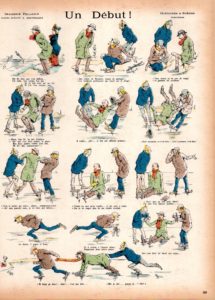

(Posted by Doug Skinner)
Tags: Cartoons
December 5th, 2018 · 1 Comment
As a postscript to my book 100 Cartoons from Le Chat Noir, here are some illustrations by Théophile Steinlen, one of the paper’s more prolific artists. That is, by the way, his art on the cover.
A brief bio from the book: Steinlen, Théophile Alexandre (1859-1923): Born in Lausanne, Switzerland. Contributed to Le Rire, Gil Blas, Les Temps nouveaux, Croquis; drew the cover for the first issue of L’Assiette au beurre. Illustrated books by Jehan Rictus, Pyotr Kropotkin, Sébastien Faure, Aristide Bruant, Anatole France. Staunch anarchist, painted many scenes of the poor. Specialized in drawings (and sculptures) of cats; best remembered today for his 1896 poster for the Chat Noir tour.
In 1903, he illustrated Les Soliloques du Pauvre, by Gabriel Randon, better known as Jehan Rictus (or Jehan-Rictus, as he sometimes spelled it). The book is a series of bitter poems in Parisian slang, the reflections of a homeless man as he roams the streets at night. Randon drew from his own experience; he’d had some rough times.
Steinlen drew no fewer than 110 illustrations, both full-page and spot, making the book almost a graphic novel. Most depict the narrator, a gaunt figure in a top hat, modeled on Randon. Steinlen abandoned his usual pen and ink for crayon, giving the whole book an air of smoky gloom.
Here are some examples, scanned from a 1921 edition by Eugène Rey.
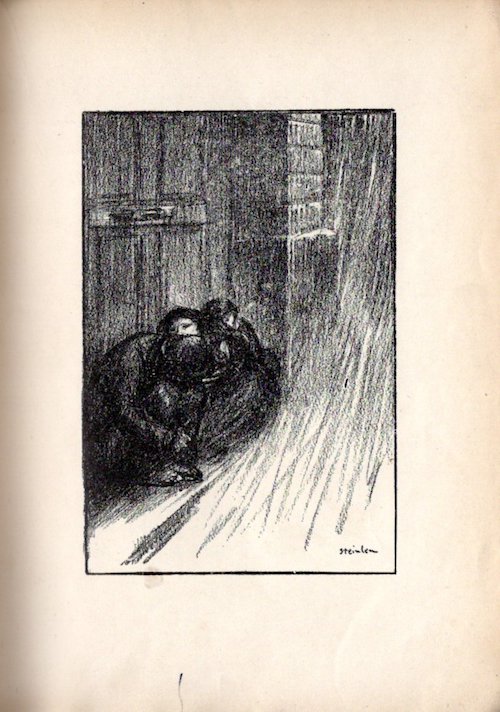
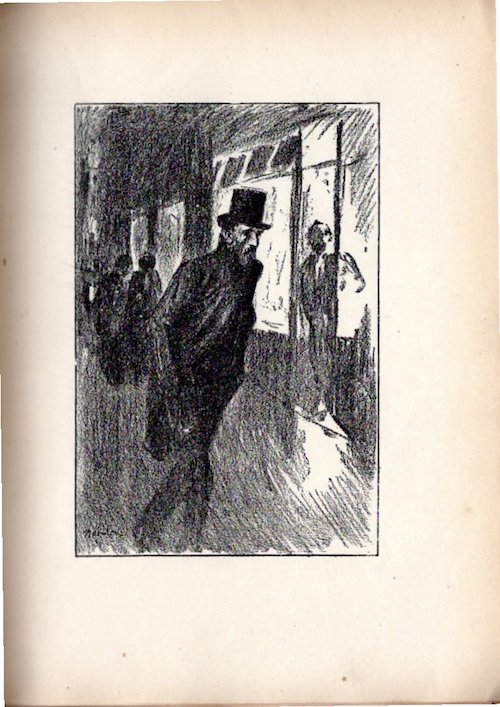
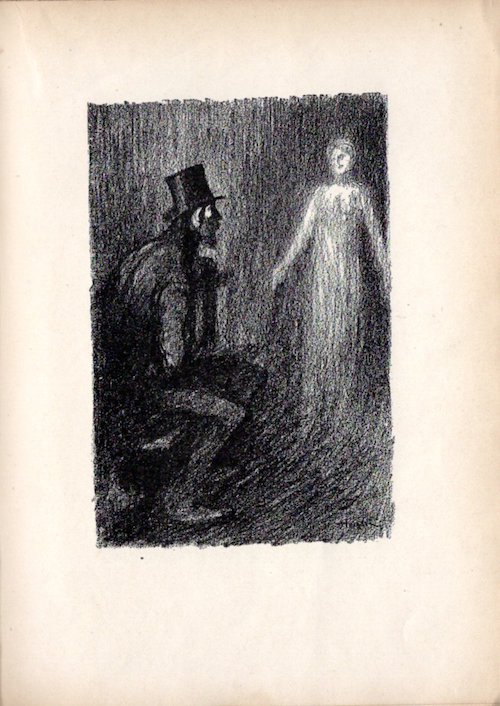
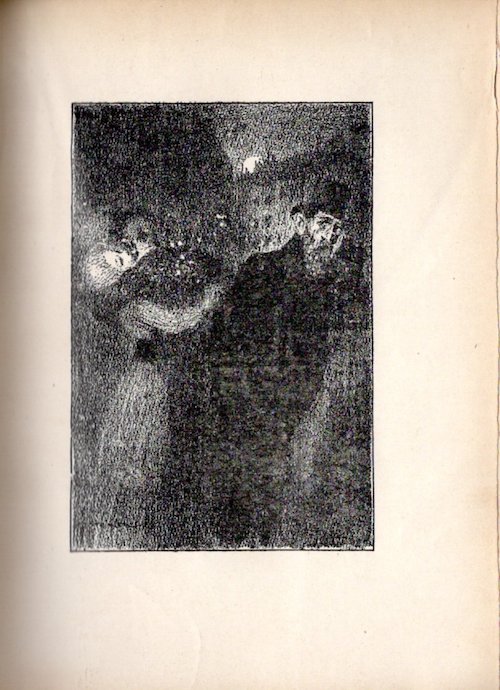
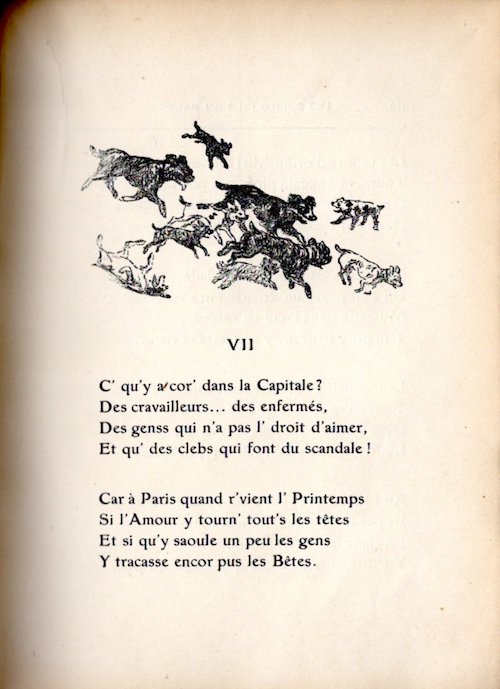

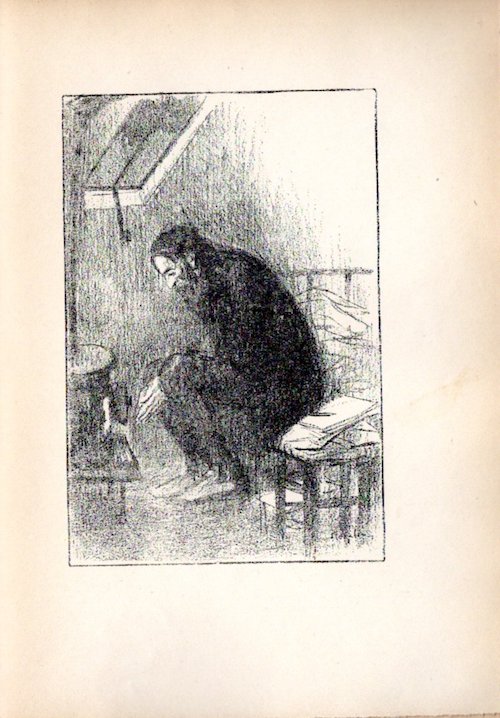
(Posted by Doug Skinner)
Tags: Books · Cartoons
November 11th, 2018 · Comments Off on Bulletin (41)
I will be presenting the latest version of my concert/talk on music attributed to fairies, aliens, and other shadowy entities, “Music from Elsewhere,” on November 15 at 7 pm. It’s part of the series Utopia/ Dystopia, curated by Morbid Anatomy and Hauser & Wirth. It’s at Hauser & Wirth, 548 W. 22nd St., NYC, and admission is free. You can find more info here.
I will be returning to NYC as part of “The Jim Turner Smorgasbord of Koo Koo,” a variety show hosted by the exemplary Jim Turner as a benefit for Dixon Place. I’ll play some of my songs, and perhaps read a snippet from one of my books. Also on the bill: David Felton, Mark Fite, Dale Goodson, Toby Huss, and Two-Headed Dog. It will unfurl on Saturday, December 1, at 7:30, at Dixon Place, 161-A Chrystie Street, NYC. Tickets are $25.
Upcoming from Black Scat Books is The Alphonse Allais Reader, a collection culled from the eight books of Allais that I’ve translated. We hope to get it out later this month.
(Posted by Doug Skinner)
Tags: Bulletins
October 28th, 2018 · 2 Comments
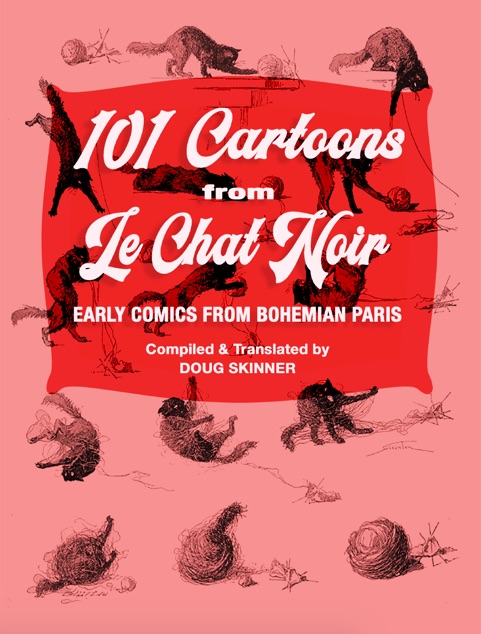
101 Cartoons from Le Chat Noir: Early Comics from Bohemian Paris is now available from Black Scat Books!
“Le Chat Noir” was one of the liveliest avant-garde papers in 19th century Paris. Published by the legendary cabaret, it delivered a weekly blast of anarchism, pranks, Decadent poetry, and black humor by such luminaries as Alphonse Allais, Charles Cros, and Paul Verlaine. It was also famous for its cartoons. Here are 101 of them: the poetic fantasies of Adolphe Willette, the slapstick animals of Théophile Steinlen, the military sketches of Caran d’Ache, the bawdy gags of Döes and Fernand Fau, and much more. With an introduction, translations, and notes by Doug Skinner.
You can find it on Amazon, or from Black Scat Books.
(Posted by Doug Skinner)
Tags: Books
October 21st, 2018 · Comments Off on Memorable Magazines (12): Hello Buddy

Hello Buddy was a small magazine (4 1/4″ x 5 1/2″, 32 pp.) intended to be sold by disabled veterans during World War 2. It contained jokes, poems, and cartoons, mostly on military subjects; it was published by Service Men’s Magazine in NYC, and subtitled “Comics of War, Facts of Service.”
This copy is undated, but a search shows there were other issues, sometimes with the same cover.
A few samples:
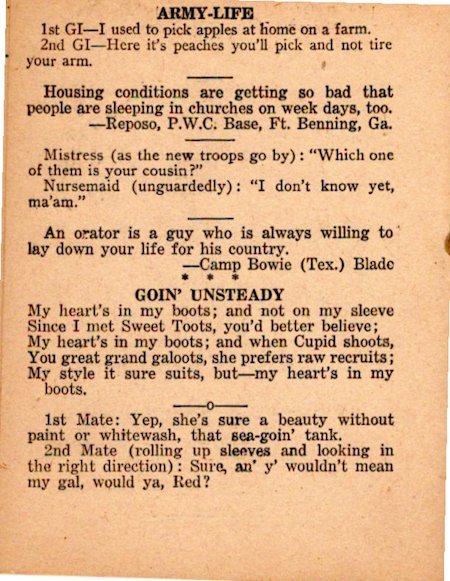
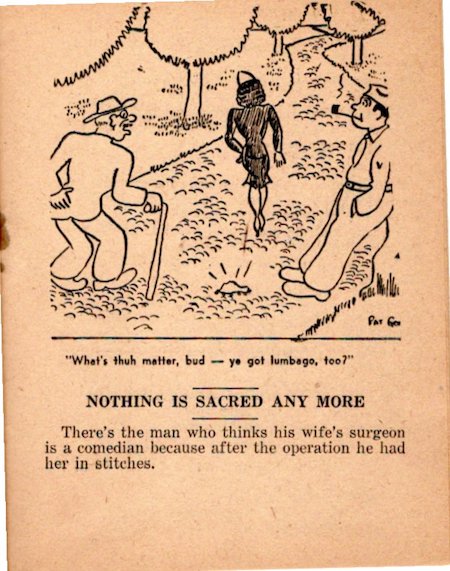
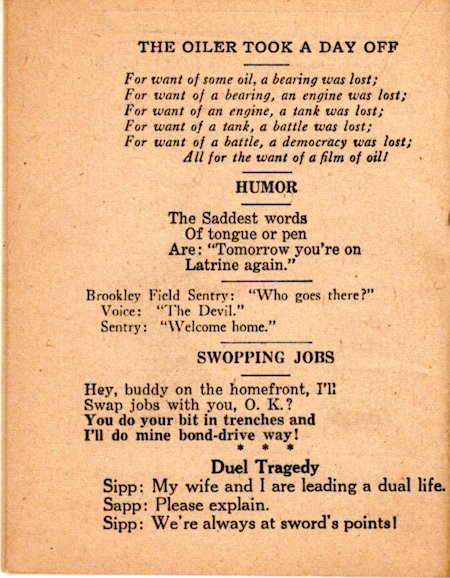

(Posted by Doug Skinner)
Tags: Ephemera
October 14th, 2018 · Comments Off on Children’s Card Games (240)

“Merry-Go-Round,” a 1910 offering from Milton Bradley, encouraged the players to collect a series of ten cards, in order, from one to ten. The cards are small (1 x 2.5 inches), with elegant black-and-white illustrations of the components of the merry-go-round.
(Posted by Doug Skinner)
Tags: Card Games
September 30th, 2018 · Comments Off on Bulletin (40)
Six of the videos Michael Smith and I made back in the ’90s will be screened in London, as part of the series TBCTV, curated by Mel Brimfield. Screenings are from 11:00 to 6:00, Friday Oct. 5, in the Lancaster Rooms of the very large and historic Somerset House. It’s free; also on the program are splendid videos by Brian Dewan and Michael Robinson. Tell your friends! There’s more info here.
Several more books are in the works from Black Scat, including a curated collection of cartoons from the 19th century paper Le Chat Noir (a major inspiration, for Black Scat, of course), a collection of my own cartoons, and an Alphonse Allais Reader chosen from my translations.
I will be reprising my concert of music from fairies and other dubious sources in November in NYC, again under the auspices of Morbid Anatomy. More info later…
(Posted by Doug Skinner)
Tags: Bulletins
September 4th, 2018 · Comments Off on Charles Cros: Collected Monologues
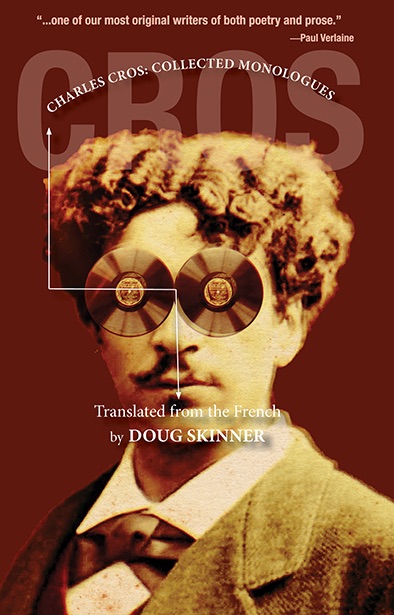
Charles Cros: Collected Monologues is now available from Black Scat Books!
Charles Cros (1842-1888) was one of the most brilliant minds of his generation, equally adept at poetry, fiction, and scientific inquiry. He wrote smutty verses with Verlaine, synthesized gems with Alphonse Allais, contributed wild prose fantasies to Le Chat Noir, and experimented with color photography and sound recording, only to die young, poor, and alcoholic. Not incidentally, he also invented the comic monologue for the actor Coquelin Cadet. In these strikingly spontaneous and modern sketches, he introduces a gallery of fools and obsessives—The Clean Man, The Fencing Master, The Capitalist, The Friend of the Family—all nattering away, assaulting the audience with trivia, and blithely unaware of their own failings.
This edition collects all 22 of Cros’s monologues, translated, annotated, and introduced by Doug Skinner, as well as performance notes by Coquelin and two essays by his friend and colleague Alphonse Allais.
Available from Amazon; more info at Black Scat Books.
(Posted by Doug Skinner)
Tags: Literature
August 29th, 2018 · Comments Off on Toot-Talk
The American Boys’ Book of Signs, Signals and Symbols, by Dan Beard (1918), is a richly illustrated (“362 illustrations by the author”) collection of symbols: hobo chalk signs, cipher alphabets, common gestures, lantern and whistle railway signals, semaphore, and more. Here, for example, is a page of “Toot-Talk,” the signals used by steamers. Many of these seem to be similar; I suppose much of the meaning is in the context. I appreciate Mr. Beard taking the trouble to draw different kinds of ships.

(Posted by Doug Skinner)
Tags: Symbols



















